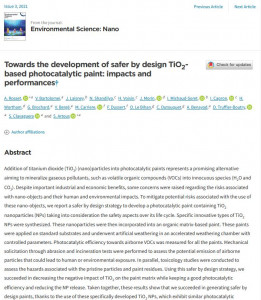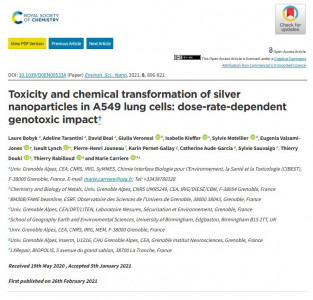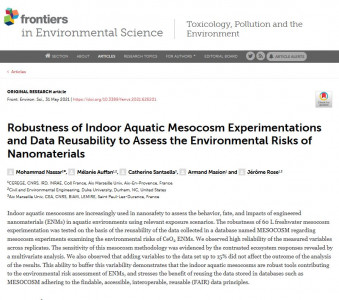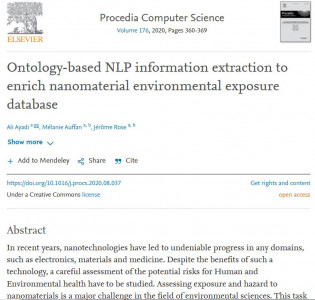Article on "Macrophage autophagy protects mice from cerium oxide nanoparticle-induced lung fibrosis" by Annangi, B., Lu, Z., Bruniaux, J., Ridoux, A., da Silva, V. M., Vantelon, D., ... & Lanone, S. (2021).
Abstract:
Cerium (Ce) is a rare earth element, rapidly oxidizing to form CeO2, and currently used in numerous commercial applications, especially as nanoparticles (NP). The potential health effects of Ce remain uncertain, but literature indicates the development of rare earth pneumoconiosis accompanied with granuloma formation, interstitial fibrosis and inflammation. The exact underlying mechanisms are not yet completely understood, and we propose that autophagy could be an interesting target to study, particularly in macrophages. Therefore, the objective of our study was to investigate the role of macrophagic autophagy after pulmonary exposure to CeO2 NP in mice. Mice lacking the early autophagy gene Atg5 in their myeloid lineage and their wildtype counterparts were exposed to CeO2 NP by single oropharyngeal administration and sacrificed up to 1 month after. At that time, lung remodeling was thoroughly characterized (inflammatory cells infiltration, expression of fibrotic markers such as αSMA, TGFβ1, total and type I and III collagen deposition), as well as macrophage infiltration (quantification and M1/M2 phenotype).









